Department and Facilities
/prod01/channel_2/media/mccms/content-assets/academics/residencies-and-fellowships/radiation-oncology-clinical-medical-physics-res-mn/3968937_0022-facility-1024X512.jpg)
The Department of Radiation Oncology at Mayo Clinic's campus in Rochester, Minnesota, is an integrated and collaborative group committed to providing the highest quality care using sophisticated technology. The department delivers radiation therapy with skill and compassion to more than 4,500 patients each year. Each radiation oncologist at Mayo Clinic specializes in treating two or three types of cancer and this ensures that all patients receive care from someone who is highly skilled at treating their specific condition.
The department offers the full spectrum of radiation therapy modalities and equipment, including:
- External beam radiation therapy, including high-energy x-ray, electrons, and orthovoltage
- Intensity modulated radiation therapy (IMRT), fixed-beam and VMAT
- Stereotactic radiosurgery, Leksell Gamma Knife Icon and frameless LINAC-based SRS
- Brachytherapy, LDR, and HDR for a wide variety of malignancies
- Proton beam therapy, scanning beam technology with four gantry rooms
- Stereotactic Body Radiation Therapy (SBRT) with protons or x-rays
- Intraoperative Radiation Therapy (IORT) via electron beam or high-dose rate brachytherapy
- Electronic portal imaging and cone beam CT images
- CT and MRI simulations
The department and Mayo Clinic Cancer Center offer numerous cancer clinical studies for all treatment sites.
I chose Mayo because it is the No.1 hospital in the world, with cutting-edge equipment and a tier-one medical team. I will be able to learn from the best to better serve the patients.
Xueyan Tang, Ph.D.
Radiation oncology clinical medical physics resident
Mayo Clinic Hospital – Rochester, Methodist Campus
The x-ray practice, brachytherapy suites, intraoperative radiation therapy suite, and proton therapy facility are located at the Mayo Clinic Hospital, Methodist campus and are connected by pedestrian subways. The majority of the residency program will take place in the x-ray practice, which is located in the Charlton Building. See the campus map for more details.
X-ray practice
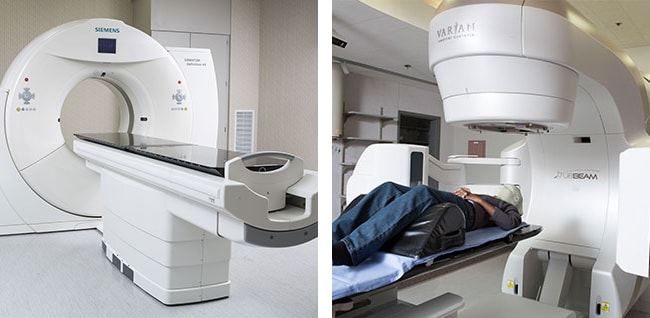
The x-ray practice has five Varian TrueBeam linear accelerators, all with advanced image guidance and SBRT capabilities, one Varian Ethos system, one intra-operative linear accelerator, six CT simulators (two dedicated to brachytherapy), and one MR scanner.
Approximately 100 patients are treated daily with x-ray radiation.
Brachytherapy
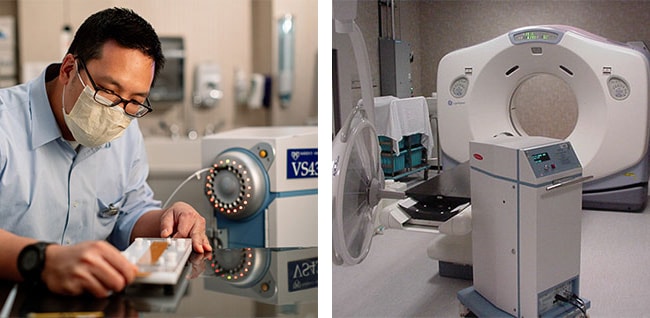
There are two brachytherapy suites, each equipped with an HDR afterloader and dedicated CT Simulator. One of the suites also has a C-arm x-ray unit and the afterloader can be transported up to the intraoperative radiation therapy suite if required for intraoperative use. Over 600 brachytherapy procedures are performed each year.
Residents participate in a three-month didactic rotation during their first year and a three‑month clinical rotation during their second year. After completion of the brachytherapy rotation, you will have the opportunity to participate in clinical brachytherapy cases for the duration of your residency program.
Intra-operative radiation therapy
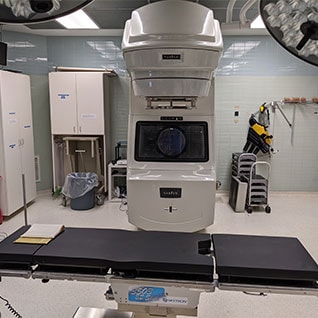 The department has a dedicated intraoperative radiation therapy (IORT) suite with an electron-only linear accelerator and HDR capability. A mobile IORT unit, the Mobetron, was added in 2022, for Rochester, Saint Marys campus. Approximately 50 to 60 IORT cases are performed yearly.
The department has a dedicated intraoperative radiation therapy (IORT) suite with an electron-only linear accelerator and HDR capability. A mobile IORT unit, the Mobetron, was added in 2022, for Rochester, Saint Marys campus. Approximately 50 to 60 IORT cases are performed yearly.
There are at least a dozen reasons why I wanted to join Mayo Clinic’s residency program, including working with state-of-the-art treatment technologies as well as the opportunity to learn from, and do research with, some of the nation’s top clinical physicists and physicians.
Judith Rivera, Ph.D.
Radiation oncology clinical medical physics resident
Proton beam therapy
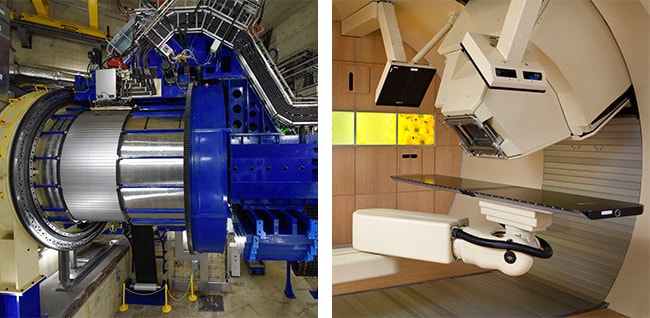
The proton beam therapy facility has a four-gantry pencil beam scanning proton (Hitachi ProBeat), which is located in the Jacobson Building. Approximately 100 patients are treated daily with the proton beam.
A proton rotation is part of the residency program.
Mayo Clinic Hospital — Rochester, Saint Marys Campus
The gamma knife surgical suite is located at the Mayo Clinic Hospital, Saint Marys campus.
Gamma knife radiosurgery
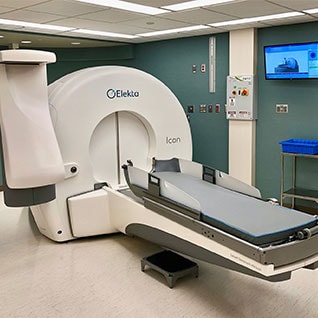 The gamma knife surgical suite is equipped with a Leksell Gamma Knife Icon. Approximately 500 gamma knife radiosurgeries are performed yearly.
The gamma knife surgical suite is equipped with a Leksell Gamma Knife Icon. Approximately 500 gamma knife radiosurgeries are performed yearly.
Residents will complete a three- to five-month radiosurgery rotation during their third year.
Regional practice
The radiation oncology department also has five regional practice locations, including Albert Lea, Mankato, and Northfield in Minnesota; and Eau Claire and La Crosse in Wisconsin, treating an additional 1,600 patients each year.
During the third year, residents have the option to rotate to a regional location to experience a smaller practice. See this radiation oncology regional providers brochure for a list of Mayo Clinic regional practice providers.